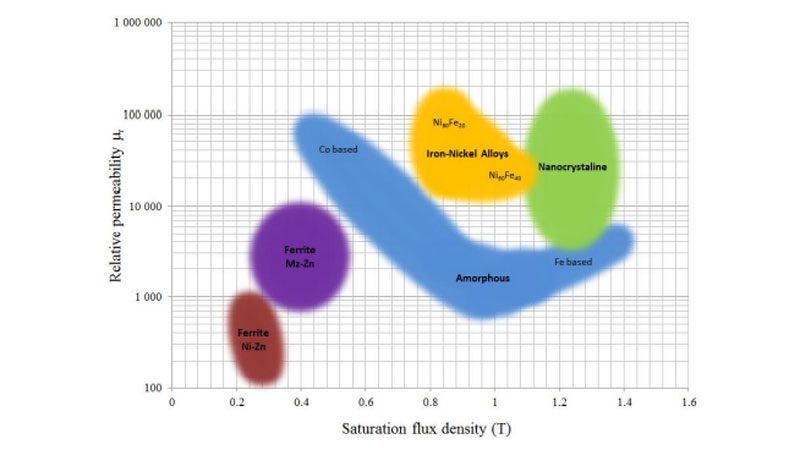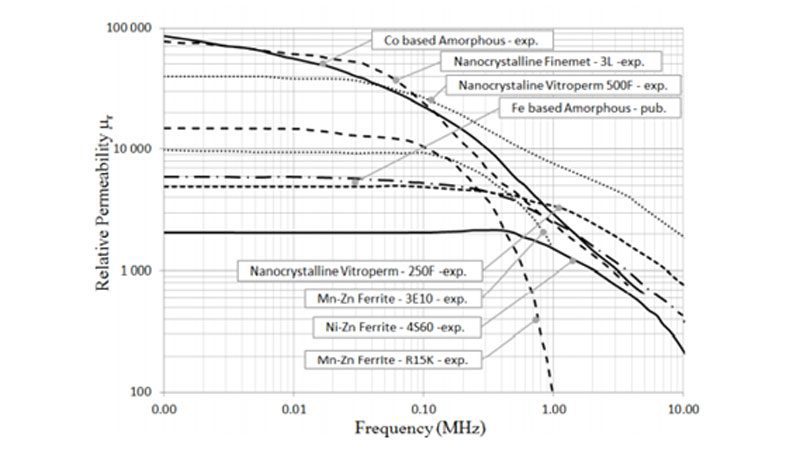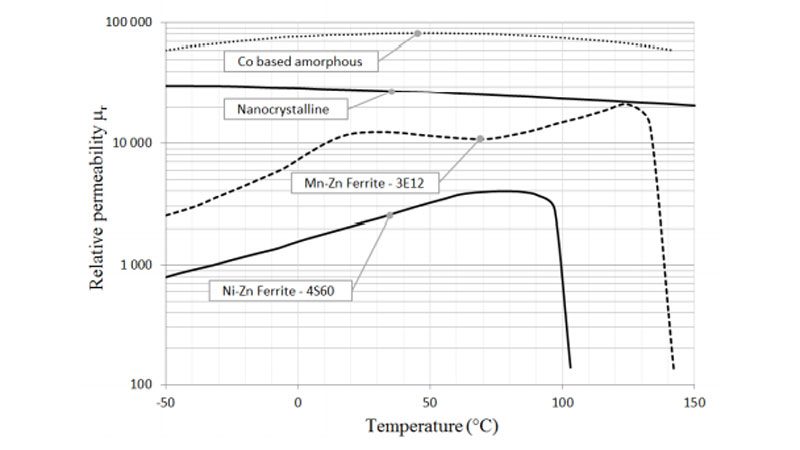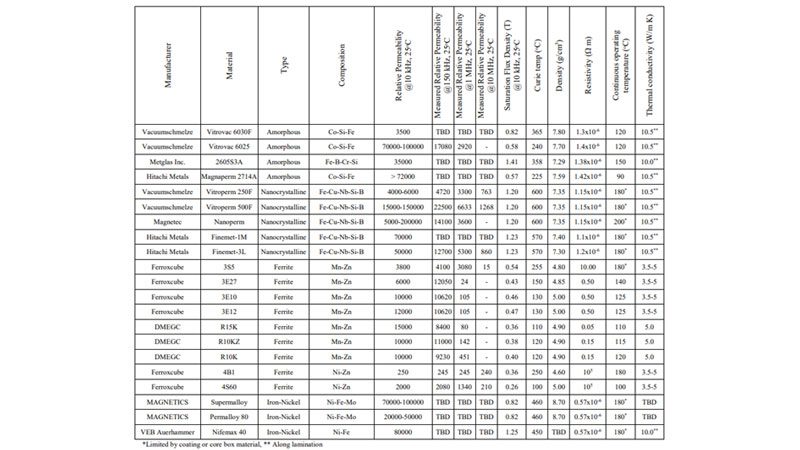Magnetic materials for EMI filters
EMI filters are widely used in converters to meet EMI standards. Since the common-mode choke is often the largest single choke in the EMI filter, it must be optimized for size and cost. In this article we dig deeper into and compare datasheets of magnetic materials aimed for a common-mode choke design.
Magnetic chokes are key for a successful filter design and the filter attenuation characteristics must be matched with the EMI source. The variable noise spectrum requires two paths: Common mode and differential mode. The magnetic material makes it possible to achieve the desired attenuation characteristic.
The ideal material for the EMI filter choke should have the following characteristics:
High saturation flux
High resistivity as eddy-current losses is inversely proportional to the electrical resistivity
Constant permeability characteristic with frequency
Constant permeability characteristic with temperature
We have chosen four different groups of materials: Amorphous, nanocrystalline, ferrites and iron-nickel alloys:
Amorphous cores are mainly available as toroidal cores. However, U-cores and blocks are available as well.
Nanocrystalline cores are toroid cores. The core is usually epoxy coated or placed in a plastic enclosure.
Ferrites are the most popular material due to relatively low costs and losses. Ferrite cores are available in many shapes.
Iron-nickel alloys are subdivided into two categories: Low nickel content alloys (50-60% Ni) with high saturation flux density and high nickel content alloys (80% Ni) with high permeability. Iron-nickel alloys are sensitive to mechanical stress; therefore, cores are placed in plastic enclosures.
The relative permeability vs. saturation flux density
Source: Magnetic material selection for EMI filters by John G. Hayes, Charles R. Sullivan, Marcin Kacki and Marek S. Rylko
In the conference paper, Magnetic material selection for EMI filters, by John G. Hayes et al., it is illustrated how the different material varies in terms of relative permeability vs. saturation flux density.
Material with high relative permeability and high saturation flux density reduces the EMI inductor size as it allows for lower turns and thus directly reduces copper losses and capacitance.
Nanocrystalline and Fe-based amorphous materials have the highest saturation flux density, followed by iron-nickel alloys, Co-based amorphous and finally ferrites.
The relative permeability vs. frequency
Source: Magnetic material selection for EMI filters by John G. Hayes, Charles R. Sullivan, Marcin Kacki and Marek S. Rylko
Magnetic materials with stable permeability characteristic are desired for the EMI filter as it drives energy storage capability.
An Ni-Zn ferrite core has a stable permeability characteristic and is almost constant up to 500 kHz. An Ni-Zn ferrite has a very high resistivity. The core loss is driven by hysteresis losses as the eddy current effects are very low. Therefore, Ni-Zn ferrites are commonly used for MHz range applications.
Amorphous and nanocrystalline materials have the highest permeability, with permeability decreasing gradually as frequency increases. They both have lower electrical resistivity, and therefore less stable permeability characteristics.
Mn-Zn ferrite permeability drops sharply at a frequency of about 200 kHz. The electrical resistivity is lower, and the permeability characteristics therefore also lower.
The relative permeability vs. temperature
Source: Magnetic material selection for EMI filters by John G. Hayes, Charles R. Sullivan, Marcin Kacki and Marek S. Rylko
Thermal behavior and cooling path have strong impact on filter size and its attenuation, therefore thermal handling must be considered during EMI filter design.
Nanocrystalline and co-based amorphous materials are almost temperature insensitive with a permeability variation of less than 15% for the temperature range from -25 °C to 130 °C. The Curie temperature is high and the operating temperature is limited by the coating or the plastic enclosure.
Ferrite materials are temperature dependent and the maximum operating point limited by the Curie temperature.
Magnetic material selection for EMI filters has been presented.
Four groups of magnetic materials have been compared and contrasted in the above. The EMI filter specification typically provides the frequency characteristic of the impedance modulus and this specification is used to define the inductor.




